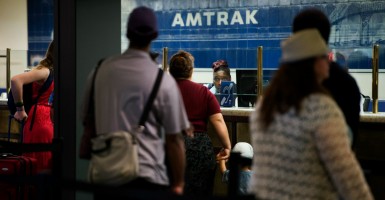Nearly $200 million in overtime pay was given to Amtrak employees in 2014, many of whom fraudulently recorded their overtime hours, according to an audit report from Amtrak’s Office of Inspector General (OIG) released Thursday.
The audit identified various trends that suggested “potential fraud, waste and abuse” in reporting both regular and overtime hours. The audit acknowledged some of these trends could be accounted for due to the nature of union agreement rules and the specific jobs of Amtrak employees, and the OIG is looking into conducting a more detailed investigation.
“Our prior investigative work has shown instances in which employees have fraudulently reported hours not worked,” the OIG said. “We believe that these trends and patterns merit further analysis and, if appropriate, action by management.”
Last year, Amtrak paid $1.2 billion total to its 19,300 employees. This includes the nearly $200 million in overtime compensation.
A variety of misleading documentation was visible in the audit. The Amtrak watchdog found employees often recorded more than 40 hours of work in a single day. Furthermore, employees reported 280 instances where they worked 31 days straight without any days off. One example the OIG cited was a coach cleaner, who reported working 108 days in a row.
According to the audit, 81 percent of total hours worked combined regular and overtime, and 2,381 timesheets reported more than 40 overtime hours tacked on to a regular 40-hour work week.
Furthermore, certain Amtrak employees only reported overtime hours, without any regular hours logged.
“Some employees repeatedly reported working overtime but no regular hours, including five employees who reported at least five weeks with overtime but no regular hours,” the OIG said.
For Amtrak employees, overtime hours are compensated 1.5 times to 2 times more than regular hours.
Additionally, union agreements can complicate matters.
In total, Amtrak employees belong to 14 unions with 23 different bargaining agreements. The agreements include rules for calculating employees’ timesheets and compensation. Because of the various careers ranging from locomotive engineers to coach cleaners at Amtrak, employees often belong to different types of unions to accommodate their particular department.
As a result, there is no standard set of rules, and employees must be trained according to their respective union’s requirements.
Furthermore, according to the OIG, Amtrak operates six separate timekeeping systems to “process timesheets and calculate wage payments.”




























